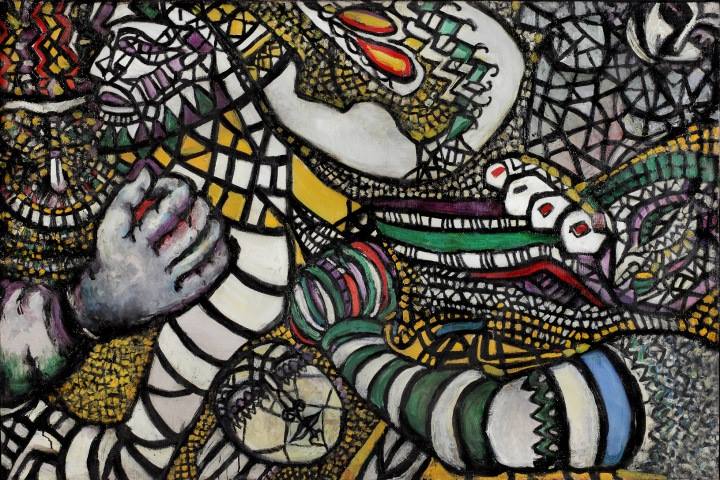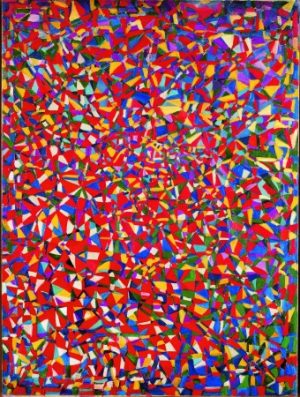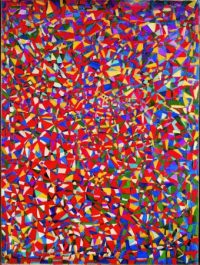Fahrelnissa Zeid at Tate Modern

This summer, Tate Modern is presenting the first UK retrospective of work by Fahrelnissa Zeid. Mostly unknown in this country today, Zeid is the perfect exemplar of Tate Modern’s agenda under its new director Frances Morris, which lays an emphasis on work by artists who have been excluded from the traditional canon of western art history. As a Middle-Eastern woman who has been virtually forgotten by western art historians, Zeid ticks a lot of boxes.
What this exhibition makes clear is that the gallery is doing more than simply ticking boxes, however. Brightly colourful and highly accomplished, Zeid’s paintings pop off the walls and draw the eye. In particular, the show features the artist’s masterpiece, My Hell (1951), which hasn’t been seen in the UK since her exhibition at the Institute of Contemporary Arts in 1954. At 5.2 metres long and painted with a complex abstract formulation in red and black, the work packs a punch, skilfully balancing order and chaos.
The painter herself led a fascinating life that allowed her to be simultaneously both a part of the developing art scene in post-war London and Paris and a distinct outsider. Born in Istanbul, her husband was part of the royal family of Iraq and was posted in London as an ambassador. Zeid (now a princess) set up a studio in their residence, and started to create her startling experiments with abstraction.
In 1958, however, her husband’s family was murdered in a military coup in Iraq, and the couple were forced to leave the embassy and move into a modest flat. Aged 57, Zeid had to learn to cook for the first time, and was fascinated by the bones of chickens and turkeys. She used many of these bones as raw materials for her artwork, mounting them on rotating plinths or setting them in resin; these are on display in the final room of the showcase, and offer a visceral counterpart to her two-dimensional figurations on canvas.
The retrospective is held in the Tate’s smallest exhibition space; this is a wise decision because, interesting as Zeid’s work is, it seems unlikely that it would remain as compelling or substantial if the viewing experience were dragged out. As it is, the show is well-paced and offers space for contemplation, hinting at rather than insisting on the artist’s relevance and interest for a contemporary western audience.
Anna Souter
Fahrelnissa Zeid is at Tate Modern from 13th June until 8th October 2017, for further information or to book visit here.


























Facebook
Twitter
Instagram
YouTube
RSS